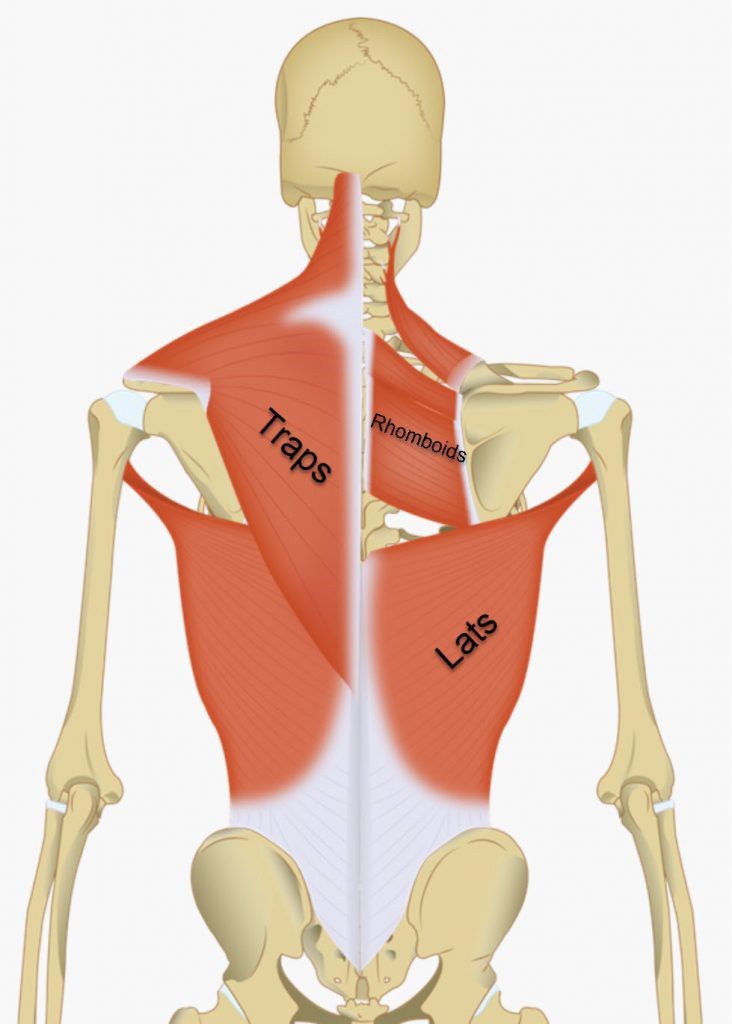Muscles acting on the spine can be divided into 2 main parts: an appendicular group and an intrinsic group. The appendicular group is composed of those muscles which attach to the upper limb and back and therefore act indirectly on the back. The group includes the rhomboids (major and minor), trapezius and latissimus dorsi.

The intrinsic group of back muscles are those that originate and insert within the torso. They are deep to the appendicular group and can further be subdivided into two groups: the erector spinae group and the transversospinalis group deep to the erector spinae muscles.
The erector spinae muscles are three long bands from most medial to lateral: the spinalis, longissimus and iliocostalis muscles. (see Image 6) This group broadly arises from the sacrum, iliac crest, and spinous processes of the lower thoracic and lumbar vertebrae. The most medially located band is the spinalis which connects spinous processes of adjacent vertebrae and are most plentiful in the thoracic region. The middle band, the longissimus is the largest portion, extending the entire spine and tends to be positioned over the transverse processes. The most lateral column is the ilicostalis and spreads out from the iliac crest to the ribs up to the lower cervical transverse processes. The function of this group is to side flex the spine when unilaterally activated and is the primary back extensor when contracted bilaterally. It also can help control spine flexion through controlled contractions.
The transversospinalis group (see Image 7) gains its name from its muscle attachments, running up & medially from transverse process to spinous process. It is comprised of three major subgroups: the semispinalis, multifidus, and rotatares. The semispinalis is the most superficial of the group, starting in the lower thoratic region ending at the skull. Generally this muscle spans 4-6 vertebrae from origin to insertion.
Deep to the semispinalis is the multifidus which runs the length of the entire column but is most developed in the lumbar region. Generally this muscle spans 2-4 vertebrae from origin to insertion. The deepest group is the rotatores muscles. Best developed in the thoracic region (which makes sense as this is where most rotation occurs!), they are present in all parts of the spine. These fibres are generally very short and pass only 1-2 segments.
The function of this muscle group is similar to the erector spinae group in that bilateral contraction results in back extension and unilateral contraction results in side flexion. This group has more control of rotary action as well, given its angulated deep attachment and smaller segmental spanning when unilaterally contracted.
